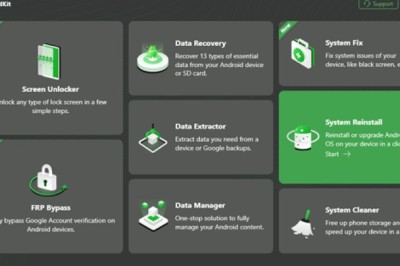views

In today's fast-paced business environment, operational efficiency isn't just a goal—it's a necessity for survival and success. Companies across various industries strive to streamline their operations, reduce costs, and increase productivity. One technological advancement playing a pivotal role in achieving these objectives is asset tracking software.
This sophisticated tool enables businesses to monitor and manage their assets in real-time, providing invaluable insights and fostering a more efficient operational model.
The Cornerstone of Modern Business Operations
Asset tracking software serves as the cornerstone of modern business operations. It allows companies to keep a close eye on their physical assets, from office equipment and tools to vehicles and inventory.
By automating the process of tracking the location, status, and utilization of assets, businesses can significantly reduce the time and resources spent on manual inventory management tasks. This automation not only streamlines operations but also minimizes the likelihood of human error, ensuring more accurate and reliable data.
The importance of asset tracking software becomes even more pronounced in the context of rentals management. In the rental industry, the efficient utilization of assets is paramount. Rentals management software, specifically designed to cater to the needs of this sector, integrates seamlessly with asset tracking solutions to provide a comprehensive overview of where each asset is, its current status, and its profitability. This integration is crucial for making informed decisions about asset maintenance, allocation, and investment, directly impacting the bottom line of rental businesses.
Enhancing Visibility and Accountability
One of the primary benefits of adopting asset tracking software is the enhanced visibility it provides into the operations of a business. Managers and decision-makers gain real-time access to information about their assets, enabling them to identify bottlenecks, prevent equipment downtime, and optimize asset utilization. This level of visibility is critical for responding quickly to operational challenges and opportunities alike.
Moreover, asset tracking software fosters accountability among employees. When staff members know that asset usage is being monitored, they are more likely to use resources responsibly and efficiently.
This accountability can lead to significant cost savings by reducing losses due to misplacement, theft, or misuse of assets. Additionally, it helps in creating a culture of transparency and trust within the organization, which is essential for collaborative success.
Streamlining Maintenance and Compliance
Maintenance and compliance are two areas where asset tracking software can make a substantial impact. By monitoring the condition and usage of assets, the software can help schedule regular maintenance, thereby extending the lifespan of these assets and preventing costly downtime. This proactive approach to maintenance is far more efficient than reactive maintenance strategies, which often result in unplanned expenses and operational disruptions.
Compliance with regulatory standards and internal policies is another aspect where asset tracking software proves invaluable. It can ensure that all assets are used, maintained, and disposed of in accordance with the relevant regulations, thereby avoiding fines and legal issues. For businesses in industries with strict compliance requirements, such as healthcare, construction, or transportation, this aspect of asset tracking software is indispensable.
Facilitating Strategic Decision Making
Beyond day-to-day operational improvements, asset tracking software provides strategic value to businesses. The data collected and analyzed by the software can inform strategic decision-making processes, helping leaders to identify trends, forecast needs, and plan for future growth. This strategic planning capability is essential for maintaining competitiveness in a rapidly changing business landscape.
For instance, by analyzing usage patterns, a company can determine which assets are underutilized and make informed decisions about whether to sell, repurpose, or acquire new assets. Similarly, insights into maintenance and operational costs can help identify areas where investments in newer, more efficient technology could yield long-term savings and productivity enhancements.
Conclusion
Asset tracking software is not just a tool for monitoring and managing assets; it's a transformative solution that enhances operational efficiency at multiple levels. From streamlining inventory management and fostering accountability to facilitating compliance and informing strategic decisions, the benefits of asset tracking software are manifold. As businesses continue to navigate the challenges of modern markets, embracing such technologies becomes crucial for operational excellence and sustained growth. In this digital age, asset tracking software stands out as a critical ally for companies looking to optimize their operations and achieve their business objectives.






















Comments
0 comment